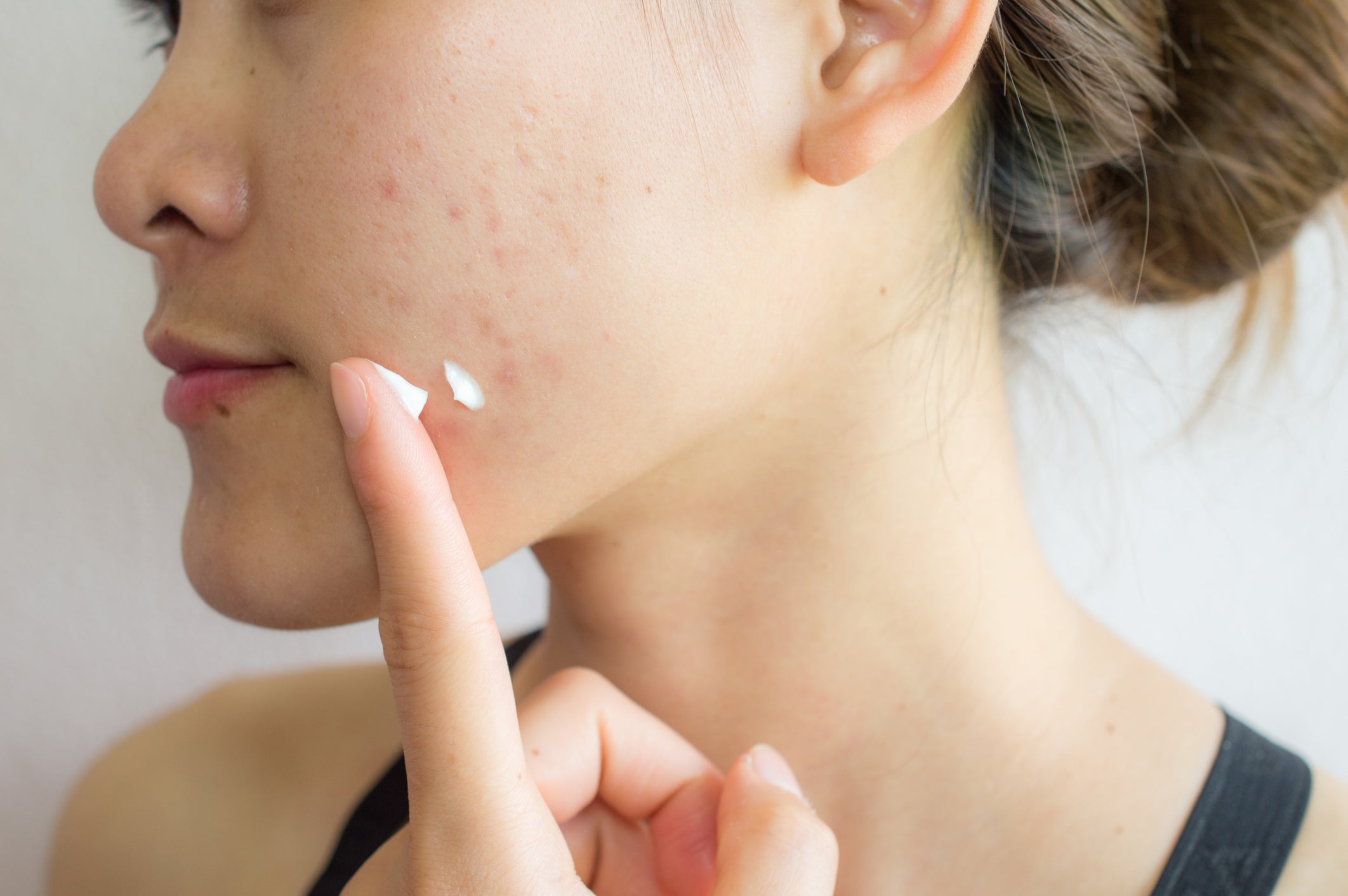Article: The Top 5 Must Have Ingredients for Acne-prone skin

The Top 5 Must Have Ingredients for Acne-prone skin
Dealing with acne-prone skin can be confusing, frustrating and an overall pain in the butt! It's also easy to get overwhelmed with the selection of products on the market right now - do I use this acne facial scrub? What about this oil-free face wash? There are so many options for you to choose from, but ultimately there are only a handful of key ingredients that you need to know that are scientifically proven to treat acne. We will also include alternative ingredients that don't necessarily fight acne but help balance the skin, which in turn may help improve the severity of your breakouts.
1. Salicylic Acid
Salicylic acid is a beta hydroxy acid (BHA) and is a keratolytic. When applied to the skin, keratolytics soften the keratin in your skin and assist with exfoliation of the skin cells. Salicylic acid works by increasing the amount of moisture in the skin and dissolving the substance that causes the skin cells to stick together.
Salicylic acid tends to work best for mild acne, including blackheads and whiteheads and is best used frequently (even without the presence of active acne) to prevent future breakouts. Salicylic acid is oil soluble, meaning it has the ability to penetrate deep into the pore lining and exfoliate inside the pore to keep them clear.
Salicylic acid is often found in over-the-counter topical acne products at concentrations of 0.5-2%. Typically salicylic acid treatments are gentle and more tolerable for those with sensitive skin. Using a leave-on treatment with salicylic acid regularly at a 1-2% concentration is recommended for exfoliation and keeping the pores clean. Consider using a 2% treatment if you have very acne-prone skin and breaking out more than usual.
2. Benzoyl Peroxide
Besides salicylic acid, benzoyl peroxide is one of the most effective ingredients to use for the treatment of acne. Benzoyl peroxide is a topical antibacterial ingredient that penetrates into your pores and kills P. acnes bacteria (acne-causing bacteria) on your skin. Benzoyl peroxide releases oxygen when it comes into contact with the skin and kills acne at the source because this specific type of bacteria is unable to thrive in an oxygen-rich environment.
Like salicylic acid, Benzoyl peroxide also helps unclog pores and regular use (even without the presence of active breakouts) can prevent future breakouts. Benzoyl peroxide also works as an anti-inflammatory and can reduce the redness and overall size of a pimple. P. acnes bacteria doesn't build up a resistance to Benzoyl Peroxide (unlike some antibiotics), so you can use it as an effective acne treatment for an extended period of time.
Benzoyl peroxide tends to be a lot harsher than other acne-fighting ingredients as it is a stronger topical. The most common side effects are dryness, peeling, itching, redness and irritation. To minimize the side effects, it is advised to start very slowly. Use Benzoyl peroxide once every few days and gradually increase usage based on how your skin is feeling. Remember - its all about listening to your skin's mood! Typically you'll find many skincare products with benzoyl peroxide at either 2.5%, 5% or 10% concentrations. We recommend using benzoyl peroxide at 2.5% concentration, as studies have shown there is no significant difference in the results produced from higher concentrations of benzoyl peroxide, only increased irritation! Remember to moisturize well as using benzoyl peroxide will dry out your skin and always use sunscreen daily!
3. Topical Retinoids
Retinoids are a range of compounds derived from vitamin A. You can get several forms of them over-the-counter, as well as prescription strength retinoids which can be in topical or oral form. Retinoids work by speeding up skin cell turnover, which helps reduce the clogging of pores and ultimately prevents the likelihood of breakouts. Retinoids aren't only good at treating acne, but are often used to effectively treat fine lines, wrinkles, hyperpigmentation and acne scars. Retinoids are typically used as an all over treatment instead of spot treating pimples and must be used consistently for a long period of time to see results. There are so many different types of retinoids and best practices to follow when using them that it really needs its own blog post!
Here are some common retinoids:
- Adapalene (Differin)
- Tretinoin (Retin-A)
- Tazarotene (Tazorac)
- Retinaldehyde
- Retinol
- Retinyl Esters
Retinoids often will cause irritation, peeling, dryness and redness and in some cases may not be a good option for those with very sensitive skin. Retinyl esters and some retinol products at low concentrations may be tolerated by sensitive skin. Moisturizing is extremely important when using a retinoid to minimize these sides effects. As always, sunscreen is a must!
4. Azelaic Acid
Azelaic acid is one of those underrated ingredients that is multi-functional and great for acne-prone skin. Azelaic acid is a dicarboxylic acid derived from grains such as barley, wheat and rye. Azelaic acid has antibacterial properties and fights certain types of acne-causing bacteria such as P. acnes. For the treatment of acne, it is generally recommended to use azelaic acid in concentrations between 15% and 20%.
Benefits of azelaic acid include:
- gentle exfoliant which unclogs pores and refines skin texture
- fades the appearance of post-acne red marks (PIE) and post inflammatory hyperpigmentation (PIH)
- reduces inflammation and diminishes blemishes
- encourages cell turnover so skin heals more quickly and scarring is minimized
- can be used in conjunction with most, if not all ingredients
- unlike some acne medications (including retinoids and benzoyl peroxide) azelaic acid is generally safe to use during pregnancy
It really is a gentle, yet effective all-star ingredient!
5. Alpha Hydroxy Acids (AHA)
Alpha Hydroxy Acids are a family of water soluble acids that work by exfoliating the top layer of your skin to promote cell turnover. Glycolic acid is the most well researched type of AHA and works by removing the stratum corneum (top most layer of skin) to promote the production of collagen and reduce the appearance of fine lines and wrinkles. Alpha hydroxy acids also help fade acne scars and hyperpigmentation. Using AHA's also increases hyaluronic acid production in your dermis and epidermis, leading to more hydrated, plump looking skin. For more sensitive skin, lactic acid and mandelic acid are more easily tolerable as they are gentler exfoliants.
Types of AHA's include:
- Glycolic acid
- Lactic acid
- Malic acid
- Mandelic acid
- Tartaric acid
- Citric acid
AHA's are most effective when used in a leave on treatment. When used in wash off products like cleansers, the contact time is too brief for them function as effective exfoliants. Using alpha hydroxy acids can make your skin sensitive to the sun so wearing sunscreen is a must!


Leave a comment
This site is protected by hCaptcha and the hCaptcha Privacy Policy and Terms of Service apply.